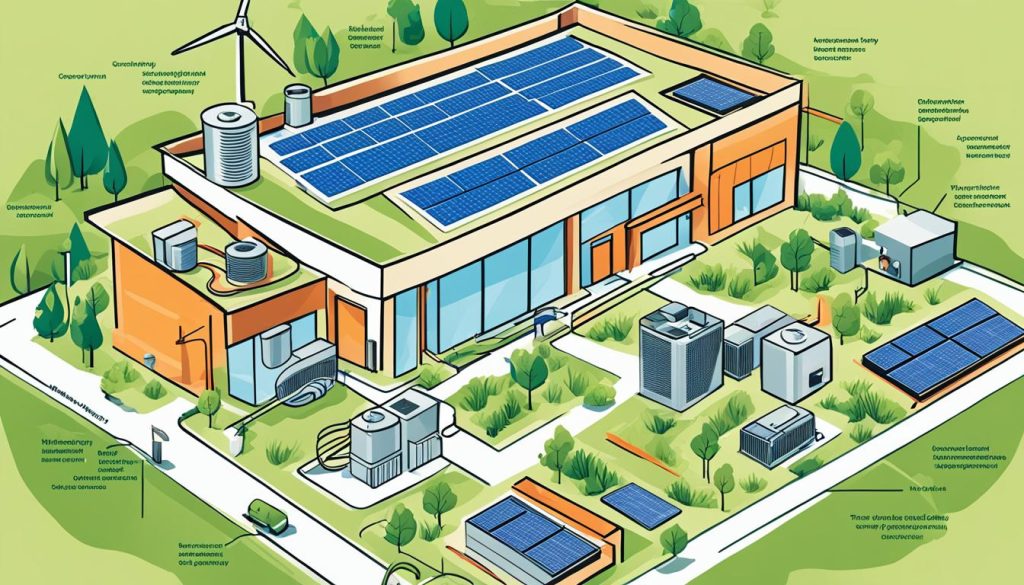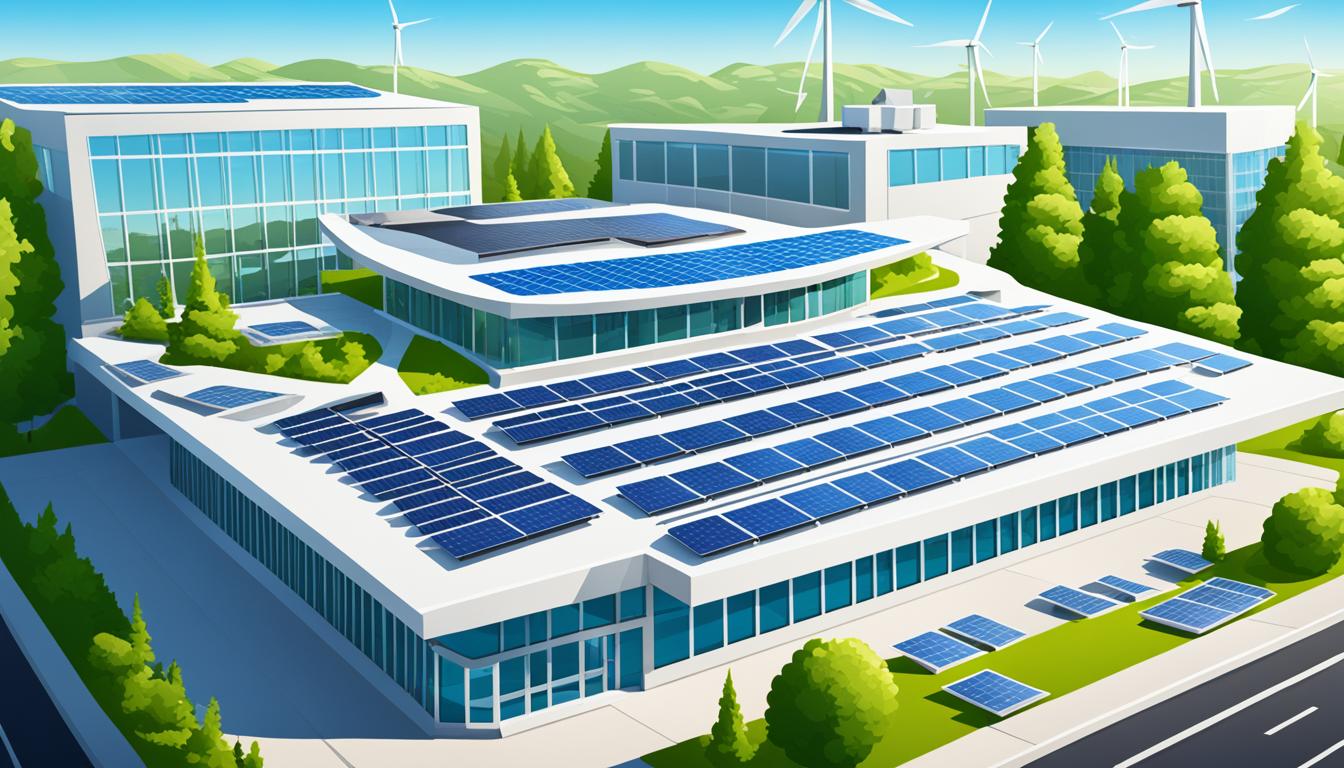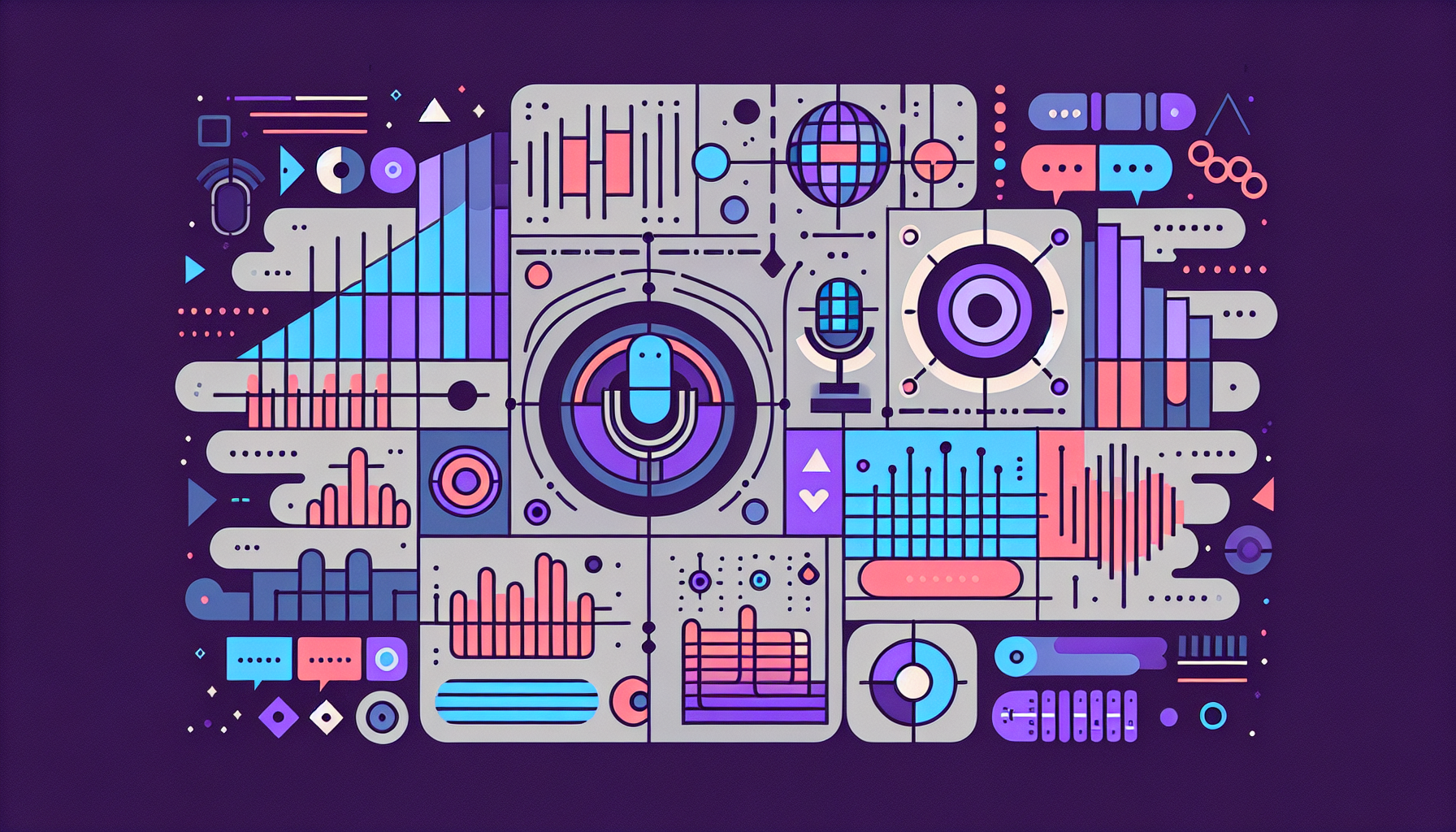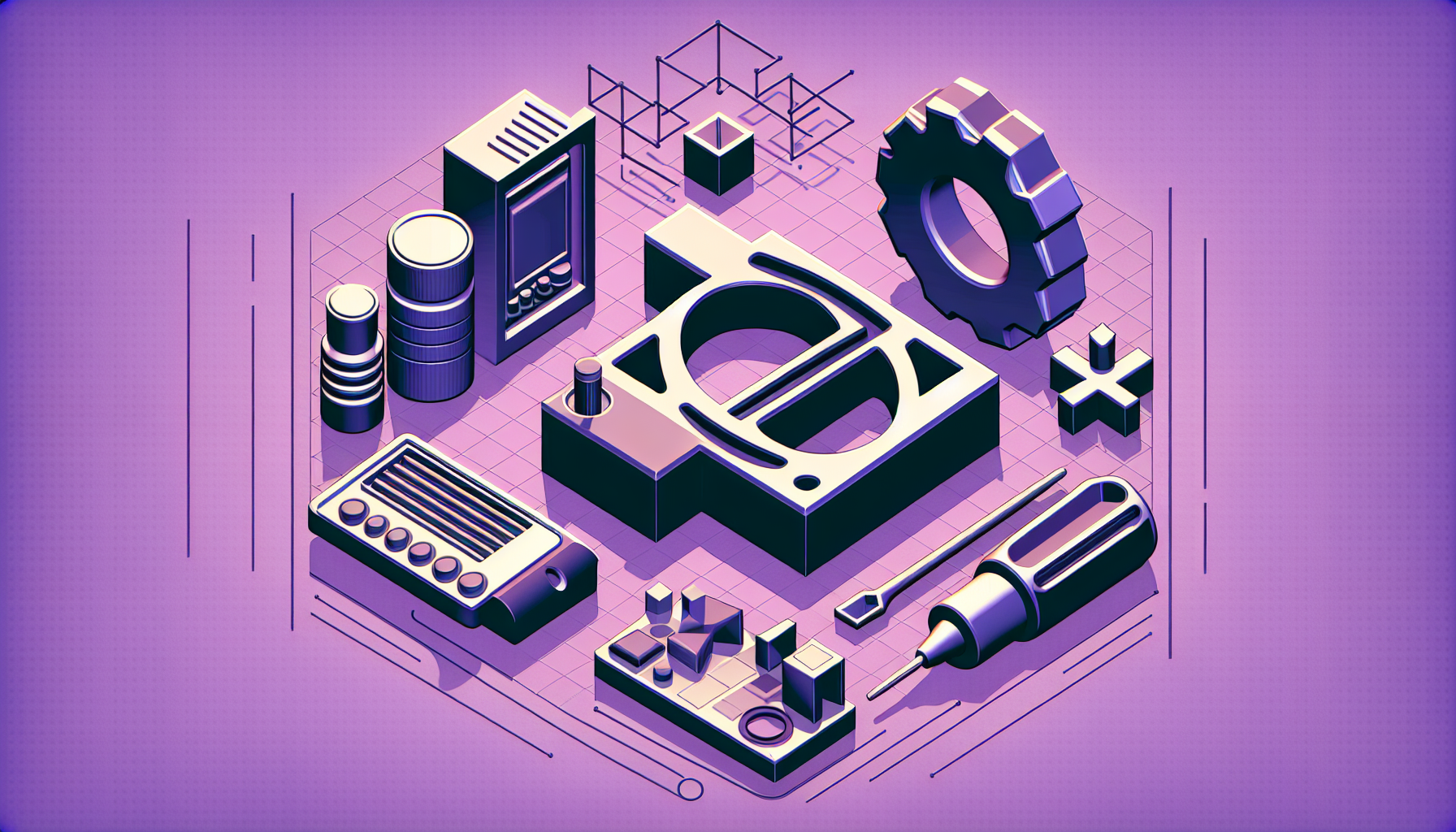You can design HVAC systems with renewable energy using advanced heat load software. This method combines sustainable architecture with energy modeling. It creates efficient and eco-friendly climate control solutions.
Advanced heat load calculation software is key for figuring out your building’s heating and cooling needs. It looks at size, location, insulation, occupancy, and weather patterns. This ensures your system is the right size. By adding renewable energy sources, you can improve performance and cut down on environmental harm.
Thermal analysis tools let you test different scenarios. They help you decide on using solar, geothermal, or wind energy in your HVAC design. Adding renewables boosts energy efficiency and meets green building standards and sustainability goals.
By getting good at using advanced heat load software and adding renewable energy, you can make HVAC systems that work well and are kind to the planet. This approach is the start of more sustainable and cost-saving building operations in the future.
Understanding HVAC Systems and Renewable Energy Integration
HVAC systems keep our indoor spaces comfy. With green building on the rise, adding renewable energy to HVAC is key. This makes buildings more energy-efficient and sustainable.
Fundamentals of HVAC Systems
HVAC systems control temperature, humidity, and air quality in buildings. They have heating, cooling, and ventilation parts. Today’s HVAC designs use simulation tools to make systems more efficient and comfortable.
Role of Renewable Energy in Modern HVAC Design
Renewable energy is changing how we control the climate in buildings. Solar panels, geothermal heat pumps, and wind turbines power HVAC, cutting down on grid electricity and fossil fuels.
Benefits of Integrating Renewable Energy Sources
Adding renewable energy to HVAC systems has many benefits:
- Lower operational costs
- Reduced carbon footprint
- Improved energy independence
- Enhanced building performance
- Contribution to net-zero energy goals
| Renewable Source | Primary HVAC Application | Energy Savings Potential |
|---|---|---|
| Solar | Cooling and water heating | 30-50% |
| Geothermal | Heating and cooling | 40-70% |
| Wind | Electricity for HVAC systems | 20-40% |
Using these technologies, we can build more sustainable and efficient buildings. They follow green building design and bioclimatic architecture principles.
The Importance of Heat Load Calculations in HVAC Design
Heat load calculations are key in designing good HVAC systems. They figure out how much heating or cooling you need to keep the inside comfy. By looking at the building’s size, location, and insulation, you can make sure your HVAC is just right.
Getting the thermal analysis right is vital for picking the best equipment and designing efficient HVAC systems. Tools for energy modeling let you think about things like how many people will be there, the lights, and the outside weather. This detailed planning means big energy savings and better comfort for everyone inside.
Building performance simulation software has changed how we design HVAC systems. These tools let you:
- Look at how much heat goes in and out in different parts of a building
- Figure out the highest cooling and heating needs
- See how different energy-saving steps work
- Make sure the system is the right size for the best efficiency
Using these features, you can make HVAC designs that go beyond just saving energy. They also improve the air quality inside and make the equipment last longer.
| Factor | Impact on Heat Load | Consideration in Design |
|---|---|---|
| Building Orientation | Affects solar heat gain | Optimize window placement and shading |
| Insulation Quality | Influences heat transfer rates | Choose appropriate insulation materials |
| Occupancy Patterns | Determines internal heat generation | Design for variable load conditions |
| Climate Zone | Defines external temperature ranges | Select equipment suitable for local weather |
Advanced Heat Load Software: A Game-Changer in HVAC Design
HVAC software has changed how we design heating, ventilation, and air conditioning systems. Heat load calculation software leads this change. It brings precision and efficiency that old methods can’t match.
Features of Modern Heat Load Calculation Software
Today’s heat load calculation software has many features that make designing HVAC systems easier:
- Real-time data integration
- 3D visualization tools
- Collaborative platforms for team projects
- Automatic updates for building codes and standards
Advantages Over Traditional Calculation Methods
Using advanced HVAC software has big benefits:
- Increased accuracy in load calculations
- Time savings on complex projects
- Adaptability to intricate building structures
- Enhanced energy modeling capabilities
Popular Heat Load Software Options in the Market
There are many top options for professionals:
| Software Name | Key Feature |
|---|---|
| EDS HVAC Load Calculator | User-friendly interface |
| Cool Calc Manual J | Cloud-based accessibility |
| ServiceTitan HVAC Load Calculator | Integration with field service management |
| Elite Software – Rhvac | Comprehensive system design tools |
These advanced tools help design more efficient HVAC systems. They reduce energy use and improve building performance. Energy modeling in these software makes it easy to predict how systems will work under different conditions.
Design with Renewable Energy using Advanced Heat Load Software
Advanced heat load software changes the game in HVAC design by blending renewable energy sources smoothly. This tech lets you craft buildings that use energy wisely and harm the environment less. Let’s dive into how these tools boost green building and renewable energy use.

Advanced software is key when designing HVAC systems with renewable energy. It helps figure out how much energy you need and the best size for solar, geothermal, and wind energy. With these tools, you can make sure your building stays warm or cool while using less energy.
This software also looks at how renewable energy affects the environment and your wallet. It shows the savings and green benefits over time. This makes it easier to explain why going green is smart to clients and others.
Key Benefits of Advanced Heat Load Software
- Accurate energy requirement calculations
- Optimal sizing of renewable energy systems
- Enhanced energy efficiency
- Environmental impact assessment
- Cost-effectiveness analysis
Using advanced heat load software lets you design HVAC systems that fit with sustainable building ideas. These tools help you make choices based on data. This means your green buildings will work well and efficiently.
| Renewable Source | Integration Complexity | Energy Efficiency | Cost Savings |
|---|---|---|---|
| Solar | Medium | High | Significant |
| Geothermal | High | Very High | Substantial |
| Wind | Low | Medium | Moderate |
Key Factors in HVAC System Sizing and Selection
Designing HVAC systems requires careful sizing and selection for the best performance. Energy modeling and thermal analysis are key in this process. Let’s look at the main factors that affect HVAC design and how simulation helps in making smart choices.
Building Characteristics and Insulation
The design of a building greatly affects how heat moves around. Things like insulation, window types, and materials change how much heat goes in and out. Software for heat load analysis takes these into account for precise system sizing.
Climate and Weather Patterns
The weather where a building is located plays a big role in its HVAC needs. Software for energy modeling uses past weather data to forecast heating and cooling demands. This ensures the right equipment is picked, handling high demands and staying efficient in normal conditions.
Occupancy and Usage Patterns
How a building is used changes its HVAC requirements. Things like when people are there, what equipment is used, and lighting add to the heat inside. Simulation tools consider these, helping designers make systems that adjust to changing loads all day.
| Factor | Impact on HVAC Design | Consideration in Energy Modeling |
|---|---|---|
| Building Insulation | Reduces heat transfer | R-value of materials |
| Climate | Determines peak loads | Temperature extremes, humidity |
| Occupancy | Affects internal heat gains | Schedule, density, activity level |
By looking at these important factors and using advanced software, you can create HVAC systems that work well and save energy. This way, people stay comfortable while using less energy and cutting costs.
Incorporating Solar Energy into HVAC Designs
Solar energy is key in modern HVAC designs. It helps cut down on energy costs and harm to the environment. Advanced software makes it easier to use solar energy, making your HVAC system better and greener.
Passive solar design is important in HVAC planning. It uses how buildings face the sun, where windows are placed, and materials to heat and cool naturally. Software helps figure out how to use these methods best, avoiding too much heat or cooling.
Active solar systems, like photovoltaic panels and solar thermal collectors, can power HVAC units or heat water for radiant floors. Software helps decide the best size and place for these systems to work well.
Renewables like solar are just the start. Software looks at how different renewable sources work together. This makes a full energy plan for your building. It helps your HVAC system work efficiently all year.
| Solar Energy Integration Method | Benefits | Considerations |
|---|---|---|
| Passive Solar Design | Low maintenance, reduced heating/cooling loads | Requires careful planning, climate-dependent |
| Photovoltaic Panels | Clean electricity generation, potential grid independence | Initial cost, weather-dependent output |
| Solar Thermal Collectors | Efficient water heating, supports radiant systems | Seasonal variations, backup system needed |
Using advanced software, you can make HVAC designs that use solar energy well. This improves how your system works and is better for the planet. It also lowers costs and helps make building technology greener.
Geothermal Systems: Leveraging Earth’s Thermal Energy
Geothermal energy uses the Earth’s natural heat for efficient heating and cooling. This method taps into the constant underground temperatures. It provides comfort all year with lower energy bills.
Principles of Geothermal HVAC Systems
Geothermal systems use fluid in underground pipes. In winter, this fluid picks up the Earth’s warmth to heat your home. In summer, it moves indoor heat to the cooler ground.
Designing Efficient Geothermal Loops with Heat Load Software
Energy modeling software is key to making geothermal systems work best. These tools look at soil type, groundwater, and building heat needs. By using local climate and property details, designers can plan the most efficient loops.
Cost-Benefit Analysis of Geothermal HVAC
Geothermal systems cost more to install but save money over time. Here’s how they compare to traditional HVAC:
| Aspect | Geothermal HVAC | Traditional HVAC |
|---|---|---|
| Initial Cost | Higher | Lower |
| Energy Efficiency | Very High | Moderate |
| Lifespan | 25-50 years | 10-15 years |
| Maintenance Costs | Low | Moderate to High |
| Environmental Impact | Minimal | Higher |
With advanced heat load software, you can forecast energy savings and ROI for geothermal systems. This helps you make smart choices for your green building projects.
Wind Energy Integration in HVAC Design
Wind energy is key in making buildings more sustainable and using more renewables. Adding wind power to HVAC systems cuts down on grid electricity use. It makes buildings friendlier to the environment. Advanced software is vital for figuring out how much wind energy your HVAC design can use.
This software looks at wind patterns and your building’s details. It finds the best size and spot for wind turbines. It also sees how much energy these turbines can give to your HVAC, making your design efficient and balanced.

When adding wind energy to your HVAC, think about these important things:
- Wind speed and direction at your location
- Building height and obstacles around it
- Space for the turbine
- Local rules and zoning laws
- How it affects noise and looks
Heat load software is great for blending wind energy with other green sources and traditional HVAC parts. This makes a system that uses energy well, keeps you comfortable, and is good for the planet.
| Wind Turbine Type | Typical Output | Best for |
|---|---|---|
| Horizontal Axis | 1-5 kW | Open areas, high wind speeds |
| Vertical Axis | 0.5-3 kW | Urban settings, variable wind directions |
| Micro Turbines | 0.1-1 kW | Residential, small commercial buildings |
Using advanced software and wind energy, you can make HVAC designs that save energy and help the planet. This is a step towards a more sustainable future in building design.
Optimizing Energy Efficiency with Advanced Software Tools
Advanced software tools have changed the game in HVAC system design. They make it possible to model energy use and simulate building performance with great accuracy. This lets you fine-tune your HVAC setups for the best efficiency and savings.
Energy Modeling and Simulation Techniques
Energy modeling software lets you build digital models of buildings and their HVAC systems. You can test different setups, like insulation and energy sources. This way, you can pick the most efficient design before you start building.
Analyzing System Performance and Efficiency
With top-notch thermal analysis tools, you can check how your HVAC systems will perform in different situations. These tools look at the climate, building materials, and how people use the space. By using this info, you can make your designs work better all year.
Identifying Opportunities for Energy Savings
These software tools give you detailed reports on energy use, carbon emissions, and how much you can save. You can see where to improve your HVAC designs. Making choices based on data helps you create systems that are better for the planet and save money for your clients.





0 Comments